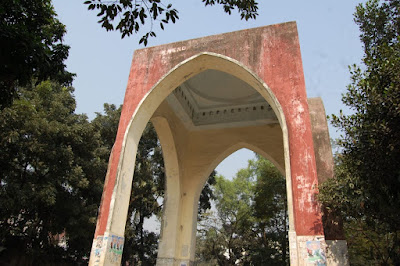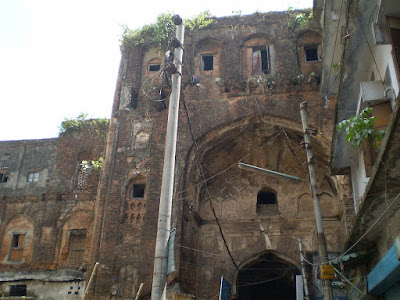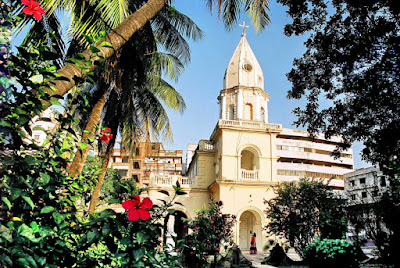6 Places in Dhaka That Remind Us of Our Glorious Past
Dhaka could be the second worst city within the world to
measure in, but it once had an excellent history. This four hundred-year-old
city once boasted beautiful Nawab palaces, lush gardens, Mughal mosques,
ancient temples and more. Dhaka, during the Mughal and British eras, was a
major example of urban settlement of the respective periods. Communities and
diasporas just like the Armenians, English, Portuguese and in fact the native
Bengalis, all settled here and made their own share of contributions to the
expansion of an excellent city.
The modern 21st century Dhaka has lost much of its old
charm. But there are still places and landmarks in Dhaka which will take one
back to the American flag days. Many of those places are now in near ruin
thanks to mismanagement and a scarcity of interest in preserving their
appearance. But if you’re trying to find something off the standard path, these
are the places to go to if you would like a reminder of what Dhaka wont to be
and, perhaps, still are often .
Here are six such places for the history aficionados who
want to think of the golden days of Dhaka.
Bahadur Shah Park
Bahadur Shah Park, formerly referred to as Victoria Park, is
found in Old Dhaka near the Sadarghat area. within the late nineteenth century,
the park wont to be the town centre of Dhaka with several important colonial
establishments built around it. it had been the most node of the road network
of urban Dhaka some time past . this is often the location where British
performed public execution of the soldiers who took part within the failed
Indian Mutiny of 1857.
It was also the location from where the accession of
Victoria because the Empress of India was announced amidst much fanfare in
1858. Hence the name Victoria Park. It remained Victoria Park until 1947, after
which it had been renamed Bahadur Shah Park as a part of the decolonizing that
followed the Partition.
The park houses a memorial built by Nawab Khwaja, dedicated
to the soldiers executed in 1857. It also has Dhaka’s only obelisk, erected in
memory of the Nawab’s late son.
 |
| Bahadur Shah Park |
Bara Katra
Bara Katra is one among the oldest surviving Mughal palatial
buildings in Dhaka. Built between 1644 and 1646 CE, it had been built to be the
official residence of Prince Shah Shuja, son of Emperor Shah Jahan . The prince
later endowed it to his diwan.
Bara Katra boasted a powerful Mughal style of architecture
and wont to be one among the best Mughal buildings during the time of its
construction. within the 19th century, James Atkinson described it as a
“stupendous pile of grand and delightful architecture”.
Located near the Chawkbazar area of Old Dhaka and shut to the
Buriganga river banks, much of its grandeur is now lost thanks to the
negligence of the authorities tasked with its preservation.
 |
| Bara Katra |
Armenian Church
This magnificent church in Armanitola of Old Dhaka may be a
significant architectural monument. It bears testimony to the existence of the
Armenian diaspora within the Bengal region within the 17th and 18th centuries.
Following the invasion of Armenia by the Persians within the
17th century, a big number of Armenians were sent to Bengal for establishing an
Armenian community overseas within the interests of self-preservation. The
Armenians played a serious role within the political and economic scene of
Bengal back within the time. They were mostly traders and businessmen dealing
in jute and leather, operating out of the Armenian district, which now bears
the name of Armanitola.
In 1781, they built a church adjacent to an Armenian
cemetery . After several years, a huge clock-tower was erected within the
church. The bells of the tower might be heard from four miles away and other
people wont to synchronize their watches consistent with it. it had been
destroyed in an earthquake in 1897.
In 1996, Teresa stayed within the church compound during her
visit to Dhaka. The Bangladesh Archeological Board recently recognized it as a
heritage site, and private efforts by an Argentinian of Armenian descent is
looking to preserve the history of the Armenian diaspora in Bangladesh.
 |
| Armenian Church |
The Dhaka Gate
Dhaka Gate, also referred to as the Mir Jumla gate, is found
at what's now the Dhaka University Campus. It are often seen on the 2 sides of
the road that results in TSC from Doyel Chattor. The Dhaka Gate was originally
built by Mir Jumla II during the reign of Aurangzeb, as a gateway to enter
Dhaka from the North side .
The Dhaka Gate marked the official entry to the capital
city. Adjacent thereto was the Bagh e Badshahi, the royal garden of the Mughals
that added to the beautification of Dhaka. the location of the garden is now
referred to as Suhrawardi Uddyan.
The Dhaka Gate was later damaged in an earthquake.
Magistrate Charles Dawson re-erected it in 1825 during a mixture of
Mughal-European style of architecture .
Today, the Dhaka Gate lies in neglect but still bears the
signs of its glory days.
 |
| The Dhaka Gate |
Rose Garden Palace
The garden Palace is a chic 19th-century mansion in K.M. Das
Lane of Tikatuly, Old Dhaka. Zaminder Hrikesh Das built it as a Jolshaghor
within the late 19th Century. Statues and fountains adorn the massive garden
ahead of the most building. the most balcony of the building served as a
viewing platform for the performances that were held within the garden.
At that point Jolshas, or lavish parties with music and
dancers, were a crucial aspect of the social lifetime of rich Hindu merchants
and landlords. In 1936, Hrikesh Das declared bankruptcy thanks to his
extravagant lifestyle and sold it to a wealthy Muslim businessman.
It was at this palace that the Awami League, the party
closely related to the Bengali independence movement in 1971, was born when
East Bengali liberal and social democrats converged here to make an alternate
political force against the Muslim League in Pakistan.
 |
| Rose Garden Palace |
Ruplal House
The Ruplal House in Farashganj of Old Dhaka may be a mansion
inbuilt the late 19th century by Armenian landlord Aratun. The Ruplal brothers
bought it in 1835 and hired Martin and Co. of Calcutta for the renovation work.
Ruplal House and Ahsan Manzil, which is nearby, wont to be the architectural
jewels of Dhaka back within the day. the world served because the residence for
the rich merchant class and top-level British officers. Ruplal House hosted a
big portion of the cultural activity of the time. Gurus of Indian serious music
like Ustad Alauddin Khan, Ustad Wali Ullah Khan and Lakshmi Devi regularly
hosted shows here. Ruplal House was also politically important sometimes .
The Ruplal House was expensive to create on site. The
structure features an Indo-Greek style of architecture , massive blocs,
porticos, tinted glasses, ballrooms and banquet halls. There wont to be a tower
at the highest , which was damaged by an earthquake. the autumn of Ruplal House
began after the Ruplal family left during the Partition in 1947. Now the Ruplal
home is jointly owned by several private and commercial owners and is during a
state of disrepair.


Post a Comment